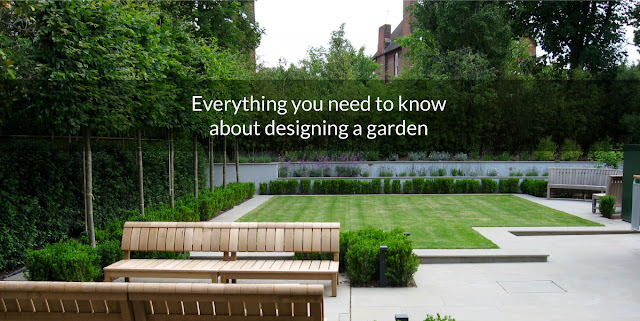What are the 7 principles of landscape design?
 |
| What are the 7 principles of landscape design? |
Landscape designers work on a canvas that is distinctly different from other art forms. The "art" is always changing as plants grow, environmental conditions change, and people use space. For this reason, landscape designers use a design process that systematically considers all aspects of the land, environment, growing plants, and user needs to ensure an eye-pleasing, functional, and ecologically healthy design.
SIMPLICITY, Elements and principles
The design process begins by determining the needs and wishes of the user and the conditions of the site. With this information, the designer then organizes the plants and materials of the landscape, which are collectively known as the features. Features can be physically described by the visual qualities of line, shape, colour, texture, and visual weight - the elements of design.
The principles are the fundamental concepts of composition (proportion, order, repetition and unity) that serve as a guide to organize the features to create an aesthetically pleasing or beautiful landscape. Knowledge of the elements and principles of design is essential to designing a landscape and working through the design process. This article describes each of the elements and explains the principles and their application.
Variety
Now, this might sound like a contrast but to the previous point but having a nice variety in a landscape and garden design London is what makes it instead of breaking it. However, you can’t just throw it all together because, for that, you need the next principle.
Balance
All that is set in a plan will convey a specific visual load with it. An excellent equilibrium is the idea of guaranteeing the weight feels even all through the arrangement.
An arrangement with formal equilibrium will have the two sides reflecting one another, while casual equilibrium alludes to approach yet not coordinating. Both can function admirably.
Emphasis
Complementing portions of the plan utilizing surface, structure or shading will give interest and lead the eye through the plan, be that as it may, a lot of accentuation will feel riotous.
Example zones are best remaining solitary. Complement territories are intended to stick out, however inside the setting of a bigger plan. Key plants can help to deemphasize or mellow structural highlights.
Sequence
Grouping alludes to how advances in the components of plant size, shape and surface are utilized. Every slow change of each component, in turn, offer a smooth, engaging succession. Sudden changes from a tall plant to a short one or a fine-finished plant to a harsh one doesn't function admirably.
Scale/proportion
The size of the segments in a scene is a scale and how they identify with one another is the extent. The size of your scene and the things in it should all be adjusted. A divider like a wall or a tree that is altogether bigger than everything else will pull the eye away from the remainder of the garden.
Unity
Unity is the idea that everything cooperates. Interconnection is picking up solidarity by utilizing associations, for example, ways, walkways, steps and fences to genuinely connect regions.
Repetition is the point at which a part of the configuration is brought together on the grounds, seeing that it happens in a few regions. Repetition can be useful yet take care not to abuse it. The strength in it is when different regions seem to bring together in help a solitary point of convergence, maybe a huge tree. All of these tips are brought together wonderfully by Landscapers in Wimbledon, London, like the wonderful designers at Justin Greer.



Comments
Post a Comment